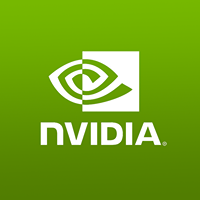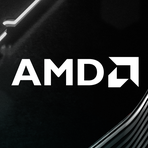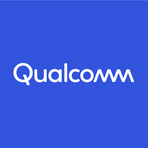The Silicon Struggle: Intel's New Chapter Under Lip-Bu Tan
March 13, 2025, 10:33 pm
TSMC
Location: Taiwan
Intel, once the titan of the semiconductor industry, now finds itself at a crossroads. The appointment of Lip-Bu Tan as CEO signals a new chapter for the company. Tan, a name not widely recognized outside industry circles, is stepping into a role that demands both vision and grit. He faces a daunting task: to revive a company that has lost its luster and its market share.
Tan's journey is a classic underdog story. Born in Malaysia and raised in Singapore, he embodies the spirit of perseverance. He ventured to the United States for education, studying nuclear engineering at MIT before launching his career in Silicon Valley. His venture capital firm, Walden International, became a breeding ground for innovation. He backed numerous startups, believing that small teams with big ideas could challenge industry giants. This belief is now crucial as he takes the helm at Intel.
Intel's recent history is a tale of decline. Once synonymous with computing power, the company has seen its stock plummet and its market share erode. In 2024, Intel reported a staggering net loss of $18.8 billion, its first loss since 1986. The semiconductor landscape has shifted dramatically, with competitors like AMD and Nvidia seizing opportunities in AI and chip design. Intel's foundry division, which manufactures chips for other companies, has become a focal point in the company's strategy to regain its footing.
Enter TSMC, the Taiwanese chip-making giant. TSMC has proposed a joint venture to operate Intel's foundry division, a move that could reshape the future of American chip manufacturing. This partnership could provide Intel with the operational expertise it desperately needs. However, the road ahead is fraught with challenges. Intel and TSMC have different manufacturing processes, and merging these could be a logistical nightmare.
The stakes are high. The U.S. government, under President Trump, is keen to see Intel rebound. The administration has urged TSMC to assist in revitalizing this American icon. The proposed joint venture could see TSMC taking a minority stake, ensuring that Intel retains control while benefiting from TSMC's advanced manufacturing capabilities. This partnership could be a lifeline for Intel, but it requires careful navigation of trade secrets and operational differences.
Tan's leadership style will be critical in this endeavor. He has a track record of turning around struggling companies. At Cadence Design Systems, he transformed the firm into a leader in chip design software, aligning it closely with TSMC. Under his guidance, Cadence's stock skyrocketed, and it became a key player in the chip design ecosystem. Now, he must apply this same strategic thinking to Intel.
The semiconductor industry is at a pivotal moment. The demand for chips is skyrocketing, driven by advancements in AI, IoT, and cloud computing. Companies are racing to innovate, and Intel must reclaim its position as a leader. Tan's experience with startups and his deep industry connections could be the key to unlocking new opportunities for Intel.
However, the challenges are immense. Intel's foundry division has been criticized for its inefficiencies and inability to keep pace with competitors. The proposed joint venture with TSMC could address these issues, but it will require a cultural shift within Intel. The company must embrace collaboration and innovation, shedding its legacy of complacency.
Moreover, Tan's ability to forge relationships with other tech giants will be crucial. He has already engaged with industry leaders like Nvidia and AMD, who are potential partners in the joint venture. Building alliances will be essential for Intel to regain its competitive edge. The semiconductor landscape is evolving, and collaboration may be the only way forward.
As Tan embarks on this journey, he must also contend with the scrutiny of investors and analysts. The pressure to deliver results will be immense. Intel's board has expressed support for the joint venture, but internal divisions remain. Some executives are resistant to change, fearing that a partnership with TSMC could undermine Intel's independence.
In this high-stakes environment, Tan's leadership will be tested. He must balance the need for innovation with the realities of a complex industry. The road ahead is uncertain, but Tan's underdog mentality may be just what Intel needs. He understands the importance of agility and adaptability in a rapidly changing market.
The future of Intel hangs in the balance. With Lip-Bu Tan at the helm, the company has a chance to rewrite its narrative. The challenges are formidable, but so are the opportunities. As the semiconductor industry continues to evolve, Intel must find its place in this new landscape. The journey will be long, but with the right strategies and partnerships, Intel could once again become a beacon of innovation in Silicon Valley. The silicon struggle is far from over, and the next chapter is just beginning.
Tan's journey is a classic underdog story. Born in Malaysia and raised in Singapore, he embodies the spirit of perseverance. He ventured to the United States for education, studying nuclear engineering at MIT before launching his career in Silicon Valley. His venture capital firm, Walden International, became a breeding ground for innovation. He backed numerous startups, believing that small teams with big ideas could challenge industry giants. This belief is now crucial as he takes the helm at Intel.
Intel's recent history is a tale of decline. Once synonymous with computing power, the company has seen its stock plummet and its market share erode. In 2024, Intel reported a staggering net loss of $18.8 billion, its first loss since 1986. The semiconductor landscape has shifted dramatically, with competitors like AMD and Nvidia seizing opportunities in AI and chip design. Intel's foundry division, which manufactures chips for other companies, has become a focal point in the company's strategy to regain its footing.
Enter TSMC, the Taiwanese chip-making giant. TSMC has proposed a joint venture to operate Intel's foundry division, a move that could reshape the future of American chip manufacturing. This partnership could provide Intel with the operational expertise it desperately needs. However, the road ahead is fraught with challenges. Intel and TSMC have different manufacturing processes, and merging these could be a logistical nightmare.
The stakes are high. The U.S. government, under President Trump, is keen to see Intel rebound. The administration has urged TSMC to assist in revitalizing this American icon. The proposed joint venture could see TSMC taking a minority stake, ensuring that Intel retains control while benefiting from TSMC's advanced manufacturing capabilities. This partnership could be a lifeline for Intel, but it requires careful navigation of trade secrets and operational differences.
Tan's leadership style will be critical in this endeavor. He has a track record of turning around struggling companies. At Cadence Design Systems, he transformed the firm into a leader in chip design software, aligning it closely with TSMC. Under his guidance, Cadence's stock skyrocketed, and it became a key player in the chip design ecosystem. Now, he must apply this same strategic thinking to Intel.
The semiconductor industry is at a pivotal moment. The demand for chips is skyrocketing, driven by advancements in AI, IoT, and cloud computing. Companies are racing to innovate, and Intel must reclaim its position as a leader. Tan's experience with startups and his deep industry connections could be the key to unlocking new opportunities for Intel.
However, the challenges are immense. Intel's foundry division has been criticized for its inefficiencies and inability to keep pace with competitors. The proposed joint venture with TSMC could address these issues, but it will require a cultural shift within Intel. The company must embrace collaboration and innovation, shedding its legacy of complacency.
Moreover, Tan's ability to forge relationships with other tech giants will be crucial. He has already engaged with industry leaders like Nvidia and AMD, who are potential partners in the joint venture. Building alliances will be essential for Intel to regain its competitive edge. The semiconductor landscape is evolving, and collaboration may be the only way forward.
As Tan embarks on this journey, he must also contend with the scrutiny of investors and analysts. The pressure to deliver results will be immense. Intel's board has expressed support for the joint venture, but internal divisions remain. Some executives are resistant to change, fearing that a partnership with TSMC could undermine Intel's independence.
In this high-stakes environment, Tan's leadership will be tested. He must balance the need for innovation with the realities of a complex industry. The road ahead is uncertain, but Tan's underdog mentality may be just what Intel needs. He understands the importance of agility and adaptability in a rapidly changing market.
The future of Intel hangs in the balance. With Lip-Bu Tan at the helm, the company has a chance to rewrite its narrative. The challenges are formidable, but so are the opportunities. As the semiconductor industry continues to evolve, Intel must find its place in this new landscape. The journey will be long, but with the right strategies and partnerships, Intel could once again become a beacon of innovation in Silicon Valley. The silicon struggle is far from over, and the next chapter is just beginning.


